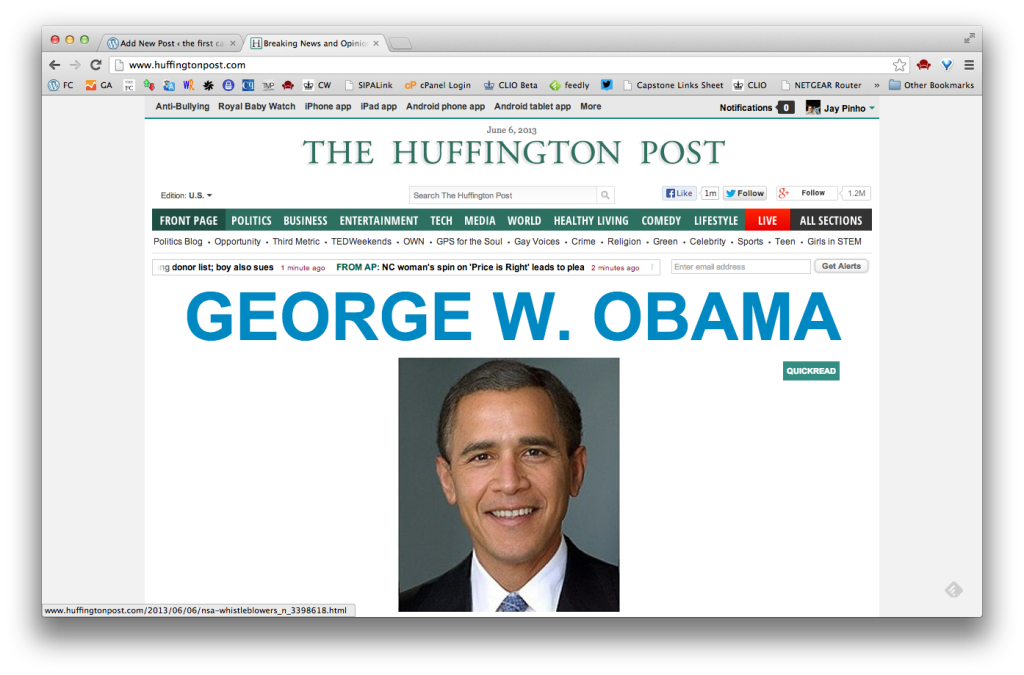
When you’re a Democratic president and The New York Times’ editorial board has utterly lost its faith in you, you may have done something wrong:
Within hours of the disclosure that the federal authorities routinely collect data on phone calls Americans make, regardless of whether they have any bearing on a counterterrorism investigation, the Obama administration issued the same platitude it has offered every time President Obama has been caught overreaching in the use of his powers: Terrorists are a real menace and you should just trust us to deal with them because we have internal mechanisms (that we are not going to tell you about) to make sure we do not violate your rights.
Those reassurances have never been persuasive — whether on secret warrants to scoop up a news agency’s phone records or secret orders to kill an American suspected of terrorism — especially coming from a president who once promised transparency and accountability. The administration has now lost all credibility. Mr. Obama is proving the truism that the executive will use any power it is given and very likely abuse it.
Many responses to yesterday’s Guardian bombshell about Verizon call data being scooped up en masse by the NSA have been less than furious. Notably, the chair of the Senate intelligence committee, Senator Dianne Feinstein, said, “This is called protecting America. People want the homeland kept safe.” She also helpfully pointed out, without a trace of concern, that this secret court order is apparently just one in a long string of them dating back consecutively to 2006. She also made sure to explain: “This is just metadata. There is no content involved. In other words, no content of a communication.”
Andrew Sullivan likewise joined the quickly swelling ranks of those that are mostly unbothered by the revelation:
I’m neither shocked nor that outraged. Meta-data is not the content of our phone records.
…
On that front, this kind of meta-data gathering hasn’t outraged me too much under either administration. This kind of technology is one of the US’ only competitive advantages against Jihadists. Yes, its abuses could be terrible. But so could the consequences of its absence.
But Sullivan and his cohorts are completely wrong on this point — and they’re wrong in three crucial but different ways: technically, logistically, and philosophically.
First, metadata — even when it excludes the subscriber’s name, as the secret court order claims — is just about the furthest thing from anonymity. Back in March, MIT News reported on a new study showing just how little metadata is required to pinpoint a specific individual:
Researchers at MIT and the Université Catholique de Louvain, in Belgium, analyzed data on 1.5 million cellphone users in a small European country over a span of 15 months and found that just four points of reference, with fairly low spatial and temporal resolution, was enough to uniquely identify 95 percent of them.
In other words, to extract the complete location information for a single person from an “anonymized” data set of more than a million people, all you would need to do is place him or her within a couple of hundred yards of a cellphone transmitter, sometime over the course of an hour, four times in one year. A few Twitter posts would probably provide all the information you needed, if they contained specific information about the person’s whereabouts.
Second, as Jane Mayer of The New Yorker points out, the actual content of the call — that is, audio or a transcript of the conversation — is not necessarily as valuable as the patterns and networks that can be traced from metadata:
For example, she said, in the world of business, a pattern of phone calls from key executives can reveal impending corporate takeovers. Personal phone calls can also reveal sensitive medical information: “You can see a call to a gynecologist, and then a call to an oncologist, and then a call to close family members.” And information from cell-phone towers can reveal the caller’s location. Metadata, she pointed out, can be so revelatory about whom reporters talk to in order to get sensitive stories that it can make more traditional tools in leak investigations, like search warrants and subpoenas, look quaint. “You can see the sources,” she said. When the F.B.I. obtains such records from news agencies, the Attorney General is required to sign off on each invasion of privacy. When the N.S.A. sweeps up millions of records a minute, it’s unclear if any such brakes are applied.
Finally, even on a philosophical or ideological level, Sullivan is wrong about the danger of not pursuing such invasive surveillance tactics. Stephen Walt takes it away:
There are two obvious counters. First, the United States (and its allies) are hardly lacking in “competitive advantages” against jihadists. On the contrary, they have an enormous number of advantages: They’re vastly richer, better-armed, better-educated, and more popular, and their agenda is not advanced primarily by using violence against innocent people. (When the United States does employ violence indiscriminately, it undermines its position.) And for all the flaws in American society and all the mistakes that U.S. and other leaders have made over the past decade or two, they still have a far more appealing political message than the ones offered up by Osama bin Laden, Ayman al-Zawahiri, and the various leaders of the Taliban. The United States is still going to be a major world power long after the contemporary jihadi movement is a discredited episode in modern history, even if the country repealed the Patriot Act and stopped all this secret domestic surveillance tomorrow.
Second, after acknowledging the potential for abuse in this government surveillance program, Sullivan warns that the “consequences of its absence” could be “terrible.” This claim depends on the belief that jihadism really does pose some sort of horrific threat to American society. This belief is unwarranted, however, provided that dedicated and suicidal jihadists never gain access to nuclear weapons. Conventional terrorism — even of the sort suffered on 9/11 — is not a serious threat to the U.S. economy, the American way of life, or even the personal security of the overwhelming majority of Americans, because al Qaeda and its cousins are neither powerful nor skillful enough to do as much damage as they might like. And this would be the case even if the NSA weren’t secretly collecting a lot of data about domestic phone traffic. Indeed, as political scientist John Mueller and civil engineer Mark Stewart have shown, post-9/11 terrorist plots have been mostly lame and inept, and Americans are at far greater risk from car accidents, bathtub mishaps, and a host of other undramatic dangers than they are from “jihadi terrorism.” The Boston bombing in April merely underscores this point: It was a tragedy for the victims but less lethal than the factory explosion that occurred that same week down in Texas. But Americans don’t have a secret NSA program to protect them from slipping in the bathtub, and Texans don’t seem to be crying out for a “Patriot Act” to impose better industrial safety. Life is back to normal here in Boston (Go Sox!), except for the relatively small number of people whose lives were forever touched by an evil act.
In other words, the NSA’s wiretapping program that began under Bush and has now very apparently flourished under Obama is every bit as bad as it sounds. The New York Times got it exactly right: the Obama administration has lost all credibility. So why is it that we always seem so willing to forget this news so quickly?

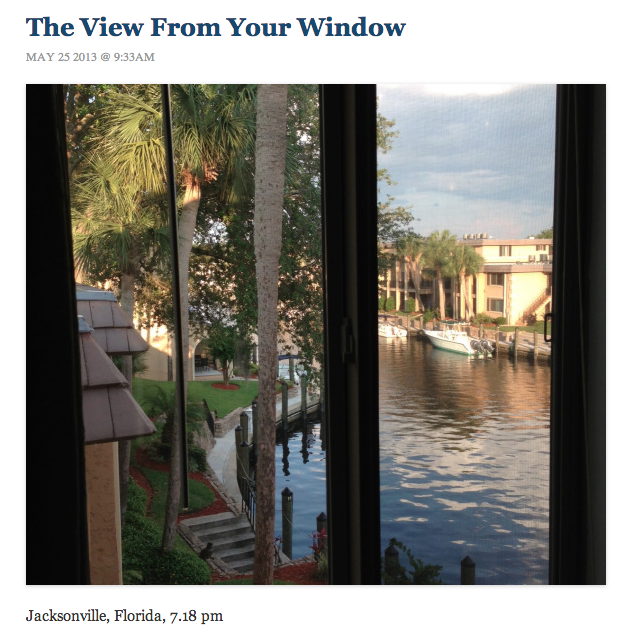

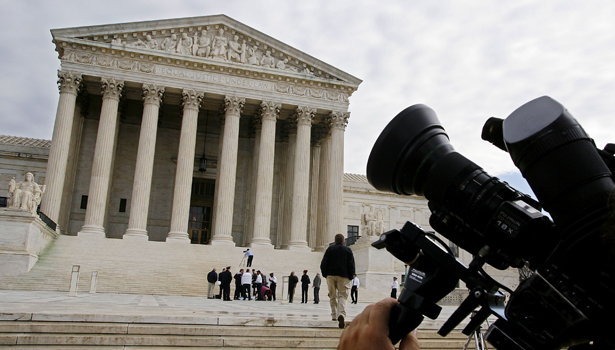











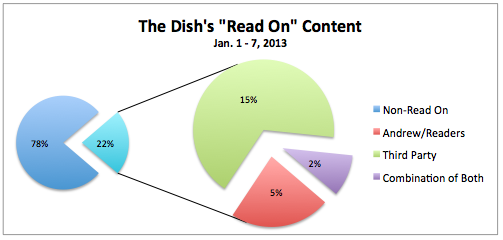

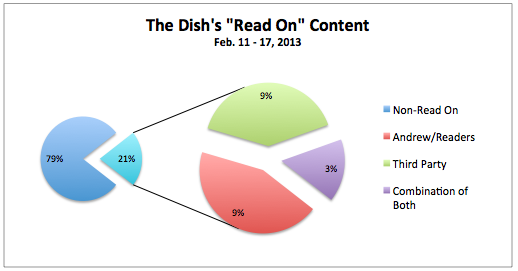











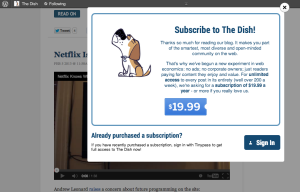 As most of the world knows by now — and by that I refer mainly to people like the ones that populate my Twitter feed — Andrew Sullivan has cut himself loose. On Monday, February 4th, The Dish officially switched over from the Daily Beast to
As most of the world knows by now — and by that I refer mainly to people like the ones that populate my Twitter feed — Andrew Sullivan has cut himself loose. On Monday, February 4th, The Dish officially switched over from the Daily Beast to